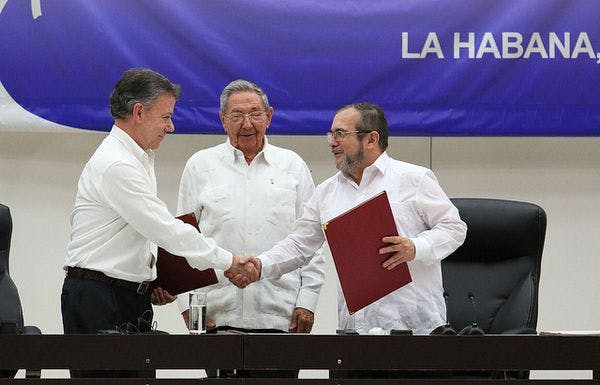Colombia: cambios clave en el nuevo Acuerdo de Paz
Los cambios introducidos en el Acuerdo de Paz entre las FARC y el Gobierno colombiano son numerosos y ponen de manifiesto que los líderes de la guerrilla han cedido en varios puntos clave. Más información, en inglés, está disponible abajo.
Suscríbase a las Alertas mensuales del IDPC para recibir información sobre cuestiones relacionadas con políticas sobre drogas.
In a display of political discipline and maturity unlike anything we’ve seen in Washington lately, Colombia’s government and the FARC guerrilla group have produced a new peace accord [PDF]. It took them only 41 days to get from the original version’s narrow (50.2 to 49.7 percent) rejection in an October 2 plebiscite, to this new document announced on November 12 and published on November 14.
These 41 days included extensive consultations between government negotiators and representatives of sectors that supported the “No” vote in the October 2 plebiscite, among them former president Álvaro Uribe. The government and “No” supporters came up with a document outlining more than 500 proposed changes to the original 297-page peace accord. Government negotiators then took this package of proposals to FARC leaders in Havana, where they spent about two weeks negotiating around the clock.
The changes to the accord are numerous: see this side-by-side comparison of the old and new accords that somebody helpfully posted to draftable.com. They reveal that the FARC leadership gave ground on several key points. The main ones are the following.
Click here to read the full article.
Keep up-to-date with drug policy developments by subscribing to the IDPC Monthly Alert.
Thumbnail: CC flickr Presidencia El Salvador
